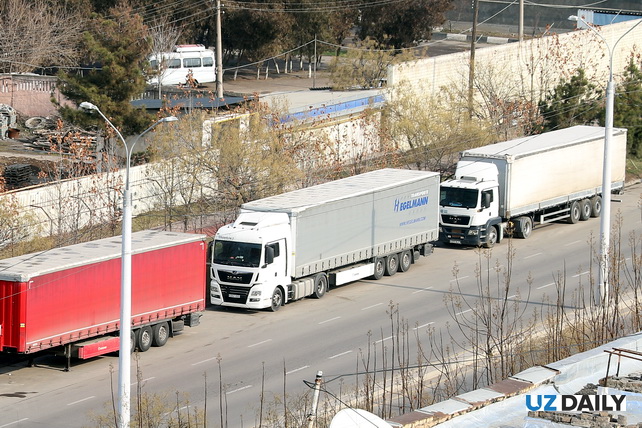Electronic Queue System Launched at Dostuk Border Crossing Between Kyrgyzstan and Uzbekistan – UzDaily.uz
By Uzdaily.uz
Copyright uzdaily

Tashkent, Uzbekistan (UzDaily.com) — Exporters and carriers crossing the Dostuk checkpoint—the main border crossing between the Kyrgyz Republic and Uzbekistan—can now benefit from faster and more efficient processing thanks to the launch of an Electronic Queue Management System (e-QMS).
The digital platform, developed by the International Trade Centre (ITC) in cooperation with the State Customs Service and the Ministry of Economy and Commerce of the Kyrgyz Republic, was officially introduced this month at a high-level event on the border.
The e-QMS regulates vehicle flows at border crossings. The ability to book a crossing slot online or via a mobile app reduces waiting times, alleviates congestion, and makes schedules more predictable. The system benefits both businesses and customs authorities by increasing transparency, efficiency, and safety at the border.
“For Kyrgyzstan, the introduction of e-QMS is an important step towards creating a favorable business environment for exporters. The new system simplifies procedures, reduces costs for exporters and carriers, and makes trade more transparent and efficient. For us, it is part of a broader digital transformation strategy aimed at improving the competitiveness of the Kyrgyz economy,” said Kyrgyz Deputy Minister of Economy and Commerce Iskender Asylkulov.
The pilot launch of e-QMS took place in November 2024 at the Kyzyl-Kiya checkpoint, where more than 12,000 vehicles were processed in the first six months. The system proved effective, cutting waiting times and receiving positive feedback from carriers. Based on this success, the platform has now been scaled up to Dostuk—one of the busiest and most strategic crossings with Uzbekistan.
In 2024 alone, more than 87,000 vehicles crossed at Dostuk, including over 21,000 import shipments, nearly 8,000 export consignments, and more than 58,000 transit movements.
Customs officials also welcomed the innovation. Medet Turzaliev, Adviser to the Chairman of the Kyrgyz State Customs Service, noted that the reform represents a shift to a modern service-oriented approach:
“We are moving away from a traditional control model toward a system focused on the needs of businesses and carriers. The electronic queue system will reduce waiting times and make border crossings more predictable, which is crucial for the entire Kyrgyz economy.”
“The integration of e-QMS at the Dostuk crossing is the result of successful cooperation between the Kyrgyz Republic, the European Union, and the International Trade Centre. This project demonstrates how digital innovation can accelerate trade flows and expand export opportunities for Central Asian countries,” said Cosimo Lamberti Fossati, Head of Programmes at the EU Delegation in Kyrgyzstan.
The initiative is being implemented under the four-year project Ready4Trade Central Asia: Fostering Prosperity through the Trans-Caspian Transport Corridor (2024–2028), funded by the European Union. The project aims to improve the efficiency of the Trans-Caspian transport corridor, simplify cross-border procedures, and strengthen the competitiveness of small and medium-sized enterprises.
“The introduction of the electronic queue system makes borders faster, more transparent, and more user-friendly. It represents a key stage in modernizing Kyrgyzstan’s trade infrastructure and an important step toward strengthening the country’s competitiveness as a trading partner,” emphasized Mondher Mimouni, Director of Market Development at ITC.
With growing trade flows along the Trans-Caspian transport corridor, the need for smart border management solutions is becoming increasingly urgent. The e-QMS directly addresses one of the region’s most pressing challenges—long and unpredictable queues—transforming checkpoints into more service-oriented and technologically advanced hubs.



